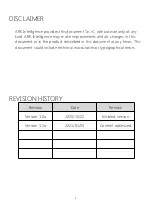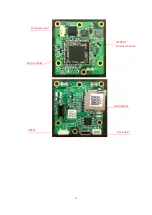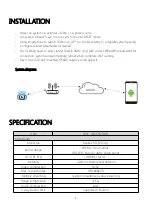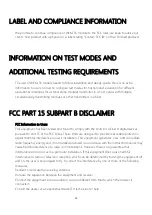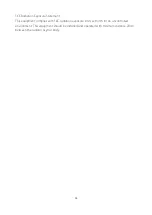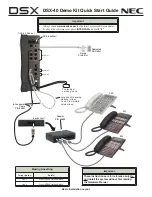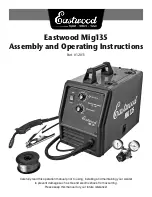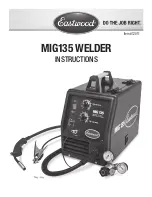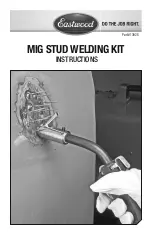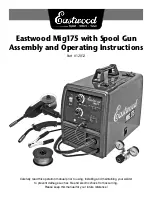
8
Wireless connectivity
Built-in 802.11n 2.4GHz Wi-Fi
Night vision
Built-in IR LED for nigh vision illumination
Built-in ICR auto-switching Day and Night modes
Event trigger
DingDong / Demolition / PIR Motion // BATTERY LOW
Event action
Melody / Siren / FFF / Push notification / Local recording
Edge recording
microSD slot (max. 256GB)
CIS Board
CIS
SOI F37 1080p CMOS Image Sensor (optional)
Lens
MegaPixel f1.75mm / F2.0
Optical F.O.V.
D/H/V: 200 / 197.6 / 97.4
ICR
Built-in IR Cut Removal
I/O Board
Input / Output
microUSB: battery charging (+5Vdc)
RESET button
Power SW
DingDong Board
Button
DingDong button
Indicator
LED sets indicator
List of applicable FCC rules
:
FCC Part15 Subpart C, Section 15.247
Information on test modes and additional testing requirements
To investigate the maximum EMI emission characteristics generates from EUT, the test system was
pre-scanning tested base on the consideration of following EUT operation mode or test
configuration mode which possible have effect on EMI emission level. Each of these EUT operation
mode(s) or test configuration mode(s) mentioned above was evaluated respectively.
RADIATED EMISSION TEST (BELOW 1GHz):
Pre-Scan has been conducted to determine the worst-case mode from all possible combinations
between available modulations, data rates, XYZ axis and antenna ports (if EUT with antenna diversity
architecture).
Following channel(s) was (were) selected for the final test as listed below.
Mode
Available
Channel
Test Channel
Modulation Tech. Modulation Type
Data Rate
(Mbps)
802.11n HT40
3 to 9
3, 6, 9
OFDM
BPSK
13.5
For the test results, only the worst case was shown in test report.
RADIATED EMISSION TEST (ABOVE 1GHz):
Pre-Scan has been conducted to determine the worst-case mode from all possible combinations
between available modulations, data rates, XYZ axis and antenna ports (if EUT with antenna diversity
architecture).


